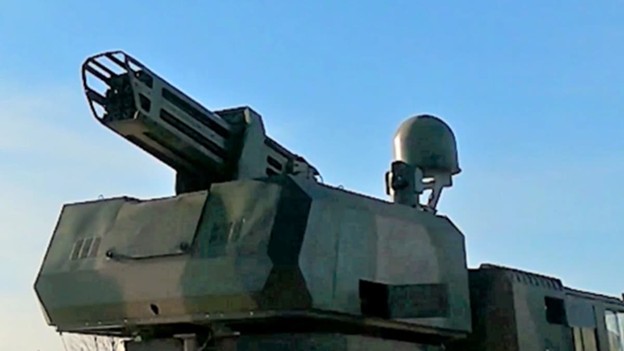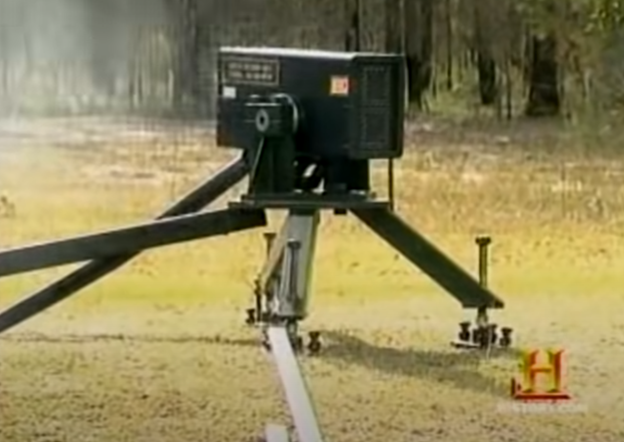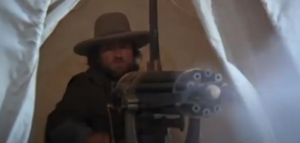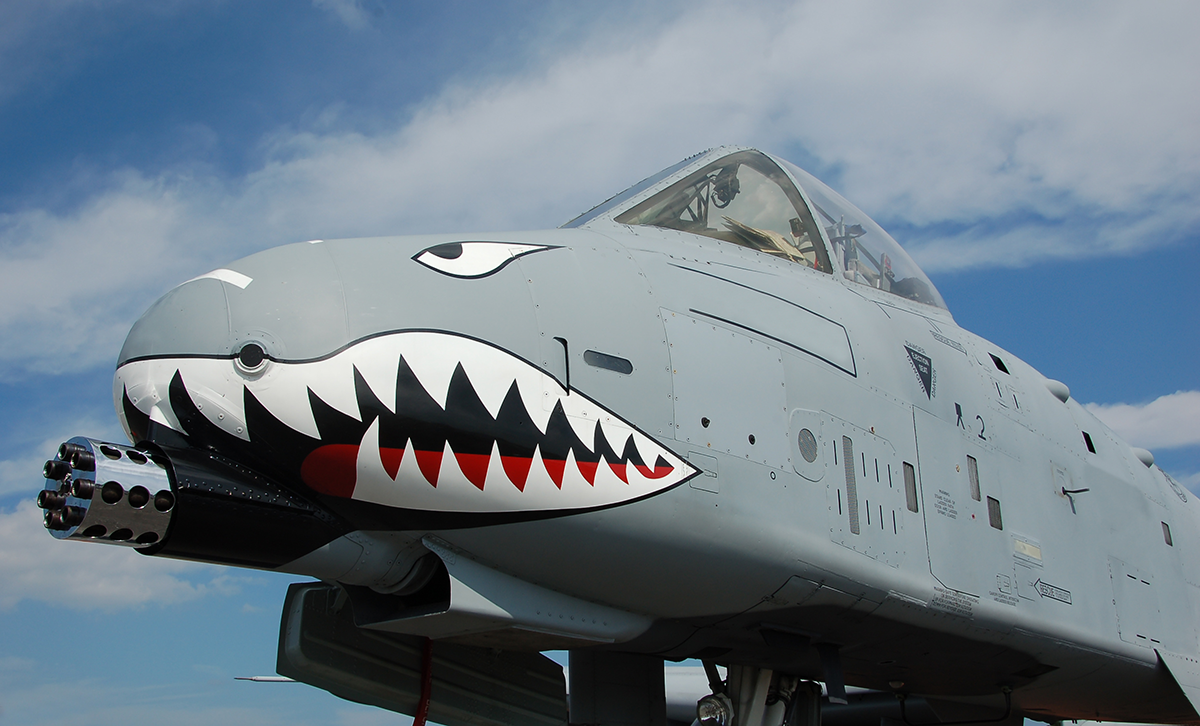
China may have created the mother of all rapid-fire machine guns. Reviving “Metal Storm,” invented in Australia in the 1990s, China now has a turret-mounted gun system that uses the arrayed gun-barrel design of Metal Storm. It is said to fire an astounding 450,000 rounds per minute.
That’s ten times the rate of fire of the US Navy’s Phalanx, the rotating barrel, belt-fed rapid-fire system, which fires, by comparison a measly 75 rounds per second (4,500 rounds per minute).
It’s misleading to use rounds per minute. None of these systems can be expected to fire for as long as a minute. China’s Metal Storm uses up all its rounds in 17.5 seconds, for example. Then there’s the logistics: half a million rounds of 20mm ammo would require a medium-sized shipping container.

A Little History
The original Metal Storm is quite simple, basically a box of tubes filled with bullets. The bullets are fired electronically from front to rear, one after the other, in rapid succession. There are no triggers or firing pins. Despite its unprecedented rate of fire, the concept was abandoned — until now.
The belt-fed machine gun was first widely used in WWI. Because of its rapid rate of fire (at the time, that was 500 to 600 rounds per minute), it had to have a water-cooled jacket. The Gatling Gun, created by Sr. Richard Gatling in 1861 and used in the American Civil War, got around this by using multiple barrels, rotating each barrel into a line of fire, in theory giving each barrel a chance to recover from its near-molten to hard state.

Rapid Systems
In modern days, variations of the Gatling Gun include:
The M134 Minigun was used in the Black Hawk helicopter and the AC-130 gunship. It can fire up to 6,000 rounds per minute. It was used in the Vietnam War, and its rate of fire was sufficient to clear brush for a troop landing.

The GAU-8/A Avenger, a 30mm gun, is perhaps the most formidable of the rapid-fire gun systems — and most effective. The size of a compact car, the GAU-8/A is packed into an A-10 Warthog. It is said the A-10 was built for the gun, not vice versa, as is usually the case. Its 7 rotating barrels fire depleted uranium rounds at a rate of up to almost 4,000 rounds per minute. One round can demolish a tank.

The US Navy mounts the Phalanx CIWS, which is a ship’s last line of defense against cruise missiles and attack aircraft.
Arguably the best air defense system in the world, Israel’s Iron Dome does not use rapid-firing guns, relying instead on missiles. But such a defense, with a limited number of missiles, would be quickly exhausted against a drone swarm. And there is the expense. The Iron Dome’s missile costs $50K each.
Theory vs Practice
The Chinese system’s stated targets are drones. Drones are changing the face of warfare. Ukraine has employed drones in unprecedented numbers in its conflict with Russia. Swarms of drones are expected to darken the skies between China and Taiwan should China launch an invasion. With this version of Metal Storm, China is saying it is ready to defend itself against any and every drone Taiwan or its allies throw at it.
Rapid-fire gun systems, starting with the Gatling Gun and now with the Chinese system, are described as putting up “a wall of lead.” On TV reports, the gun system is said to create a “bullet curtain.” Whatever. Engineers know there is no way to completely enclose a dome with anything, lead, bullets, rays, from a point in its center. Metal Storm’s success in defending the mainland would rest upon:
- An unbroken line of Metal Storm systems
- An ability to find and target drones automatically and quickly
- An almost unlimited supply of bullets.
Heat Transfer an Issue
The heat is the limiting factor in rapid-fire guns of any type (rotating barrel or stationary) from being used for any length of time, even when considering a theoretically endless supply of ammo.
The Chinese system does not have rotating barrels. Each barrel comes to the field packed with bullets (that’s plural) and ready to fire. The barrels are expendable and can be discarded after use.
Will It Work?
China’s Metal Storm has not yet been battle-tested, so its effectiveness has yet to be ascertained. However, even the most rapid-firing gun systems could be foiled by attacking forces that send wave after wave of cheap decoy drones to have Metal Storm fire away and exhaust its ammunition stores, then follow up with armed drones, missiles and aircraft.
If only the future were here, a future with ray guns, computer-guided laser weapons that can pulse energy like a capacitor, be aimed to redirect a beam of light quicker than the blink of an eye, its “bullets” firing in straight lines without gravity’s arc, constantly on target and at a cost of a few cents a pop.
Israel is developing such a system (like their Iron Dome), and so is the U.S., Taiwan’s sworn protector.
